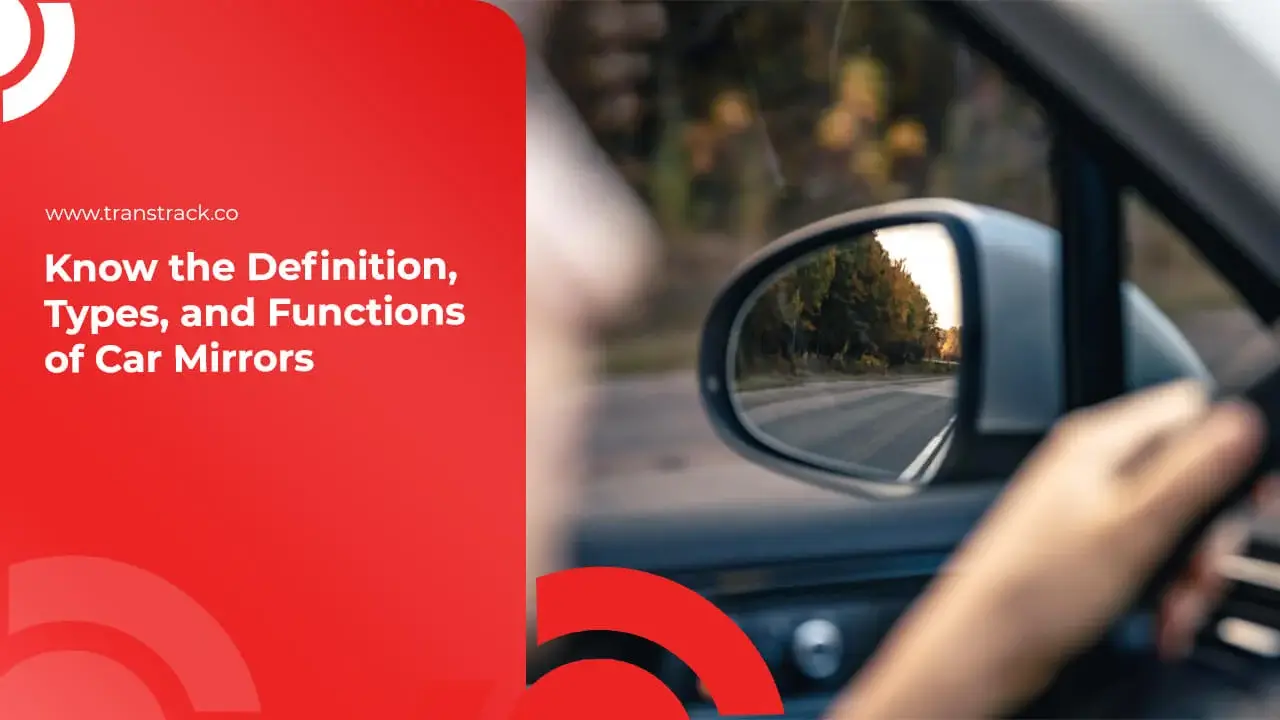Know the Definition, Types, and Functions of Car Mirrors

The function of car mirrors is none other than a safety factor. Car mirror are part of a motor vehicle that is generally placed on the outside of the car, next to the windshield and rear windshield. This rearview mirror serves as an observation tool for the driver to see the conditions around the car, including to monitor traffic behind and around the car while driving. Car mirrors usually consist of flat or convex mirrors that reflect images from the back or side of the car to the driver to assist in decision-making while driving, such as switching lanes or turning.
Car mirrors can also be equipped with additional features, such as integrated signal lights, heaters to avoid dew or ice on the mirror surface during cold weather, or even rear cameras to assist with reverse parking or to monitor the surrounding area while the car is moving backwards. Car mirrors are an important component for safe driving as they help reduce the risk of accidents by providing better visibility to the driver. Find out more in the following article TransTRACK!
What are the Types of Car Mirrors?
In general, there are three types of car mirrors that are commonly used:
Outside Mirrors
Outside mirrors are a type of rearview mirror that is located outside the vehicle, usually on the left and right sides of the car and at the rear. Their main function is to provide visibility to the driver of traffic conditions around the car, including vehicles that are behind or around the car.
Inside Rearview Mirror
Inside mirrors, also known as rearview mirrors, are located inside the vehicle cabin, usually in front of the driver. Its function is to provide the driver with a rear view, so that the driver can see traffic conditions behind the vehicle without having to look away.
Additional Mirrors
Additional mirrors can include various types of mirrors that do not fall under the category of outside mirrors or inside mirrors. An example would be additional side mirrors that are installed to improve visibility in areas that are difficult to reach by standard outside mirrors, such as around blind spots. Additional mirrors can also include rear cameras or parking sensors that assist the driver when performing reverse parking maneuvers.
The use of specific types of mirrors may vary depending on the specific vehicle model and configuration, as well as the driver’s preference. However, in general, a combination of outside mirrors, inside mirrors, and auxiliary mirrors work together to provide the driver with optimal visibility and enhance driving safety.
What are the Functions of Car Mirrors?
Car mirrors have several important functions in driving safety and comfort. Here are some of the main functions of car mirrors:
To Monitor Traffic Conditions
Car mirrors help drivers monitor traffic conditions around the vehicle, including vehicles that are behind or around the car. This helps the driver make informed decisions when changing lanes or performing other maneuvers.
Minimize Blindspot Areas
Car mirrors help minimize blindspot areas around the vehicle. By using side mirrors and additional mirrors, the driver can see areas that are difficult to reach by direct vision, reducing the risk of accidents.
Helps during Parking Maneuvers
Car mirrors, especially rear-view mirrors and rear cameras, are very helpful when performing reverse parking maneuvers. They provide additional visibility to the area behind the vehicle, helping drivers to park more accurately and safely.
Preventing Collisions
By constantly monitoring traffic conditions using car mirrors, drivers can avoid potential collisions with other vehicles. Mirrors help drivers to make informed decisions and reduce the risk of accidents occurring.
With these functions, car mirrors are one of the important components in a vehicle’s active safety system and help drivers to drive more safely and comfortably.
In maintaining driving safety and comfort, it is undeniable that car mirrors play a very important role. By understanding their key functions, drivers can increase their alertness and responsiveness to traffic conditions around the vehicle.
However, it is also important to remember that thorough vehicle maintenance is also an integral part of a safe and smooth driving experience. To help ensure that your vehicle stays in optimal condition, as well as to maximize the benefits of any existing safety features, TransTRACK offers a reliable solution through its Vehicle Maintenance System.
With the TransTRACK Vehicle Maintenance System, you can easily keep track of routine maintenance schedules, vehicle condition monitoring, and notifications for necessary services. This will not only help extend the life of your vehicle, but also provide peace of mind that you are always driving in a well-maintained vehicle.
Don’t let your vehicle be a source of worry. With TransTRACK Vehicle Maintenance System, you can focus on a safe and comfortable driving experience, while improving the efficiency and reliability of your vehicle. Check out TransTRACK for more information and start your journey towards better vehicle maintenance today!
Topic





